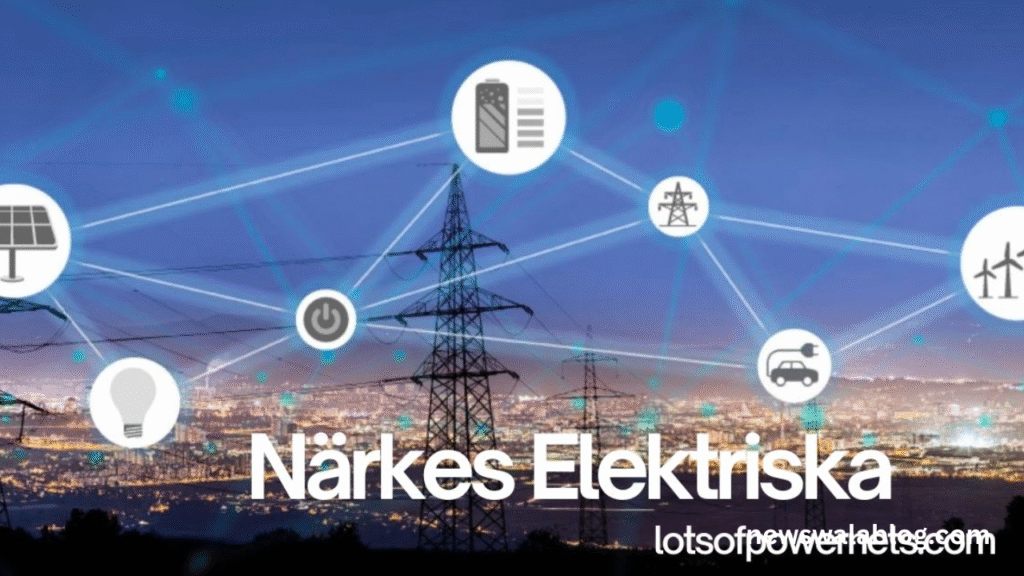Business
UK Printer Security Alerts A Complete Guide to Protecting Your Organization
Published
3 months agoon
By
Owner
Introduction
In today’s interconnected digital landscape, printer security vulnerabilities have emerged as a critical concern for organizations across the United Kingdom. These seemingly innocuous office devices have transformed from simple printing machines into sophisticated network endpoints that can pose significant security risks when left unprotected.
UK organizations find themselves particularly targeted by cybercriminals who recognize the often-overlooked nature of printer security. Unlike computers and servers that receive regular security attention, printers frequently operate with default configurations and outdated firmware, making them attractive entry points for malicious actors. The frequency of uk printer security alerts has increased dramatically over the past year, highlighting the urgent need for comprehensive secure printer implementations across all sectors.
The current threat landscape for networked printers reveals a concerning picture. Modern office environments rely heavily on multifunction devices that combine printing, scanning, copying, and faxing capabilities. These devices store sensitive data, connect to corporate networks, and often maintain persistent internet connections, creating multiple attack vectors that organizations must address proactively.
Common Types of UK Printer Security Alerts

Ransomware Attacks
Print server encryption incidents have become increasingly sophisticated, with attackers specifically targeting the centralized systems that manage multiple printing devices across organizations. These attacks can effectively paralyze an entire organization’s printing capabilities while demanding substantial ransoms for restoration.
Network lateral movement through printers represents another growing concern. Cybercriminals use compromised printers as stepping stones to access more sensitive systems within the corporate network. Once inside the network perimeter, attackers can move horizontally to reach critical servers and databases.
Recent UK cases demonstrate the real-world impact of these threats. Several manufacturing companies in the Midlands experienced significant operational disruptions when ransomware groups targeted their printing infrastructure, causing production delays and substantial financial losses.
Data Breach Vulnerabilities
Unencrypted print jobs stored in device memory create substantial privacy risks for organizations. Many users remain unaware that their confidential documents may persist in printer storage long after the physical documents have been collected, potentially exposing sensitive information to unauthorized access.
Hard drive data recovery risks compound these concerns, particularly for organizations that lease or dispose of printing equipment without proper data sanitization procedures. Forensic experts can often retrieve vast amounts of sensitive information from printer hard drives, including financial records, personal data, and confidential business communications.
GDPR compliance implications for UK businesses add another layer of complexity to printer security management. Organizations must ensure that their printing infrastructure meets stringent data protection requirements, including appropriate technical and organizational measures to protect personal data throughout its lifecycle.
Network Access Point Exploitation
Printers serving as entry points to corporate networks represent one of the most underestimated security risks facing modern organizations. These devices often connect directly to internal networks with minimal security controls, providing attackers with direct access to sensitive systems and data.
Default password vulnerabilities continue to plague many printing environments. Manufacturers often ship devices with well-known administrative credentials that organizations fail to change, leaving systems vulnerable to unauthorized access and configuration changes.
Firmware update gaps create additional security exposures, as many organizations lack systematic procedures for maintaining printer software currency. Outdated firmware may contain known vulnerabilities that attackers can readily exploit to gain system access.
Recent UK-Specific Security Incidents
Government department breaches have highlighted the critical importance of comprehensive printer security measures. Several ministerial departments experienced data exposure incidents traced to inadequately secured multifunction devices that stored sensitive governmental communications.
NHS printer security concerns have garnered significant attention following incidents where patient information became accessible through compromised printing systems. These breaches not only violated patient privacy but also demonstrated the potential for printer vulnerabilities to impact critical healthcare services.
Financial sector alerts have emphasized the targeted nature of attacks against banking and investment organizations. Cybercriminals specifically seek access to financial printing systems that may contain customer account information, transaction records, and other valuable financial data.
Educational institution vulnerabilities have affected universities and colleges across the UK, where large, distributed printing networks often lack centralized security management. Student and faculty personal information, research data, and administrative records have been exposed through printer security gaps.
Regulatory and Compliance Framework

UK Data Protection Requirements
ICO guidance on printer security emphasizes the need for organizations to implement appropriate technical and organizational measures to protect personal data processed through printing systems. The Information Commissioner’s Office has issued specific recommendations for securing multifunction devices and managing print-related data processing activities.
GDPR Article 32 technical safeguards require organizations to implement security measures appropriate to the risk level of their data processing activities. For printing environments, this includes encryption of stored and transmitted data, regular security assessments, and comprehensive access controls.
Sector-specific regulations for NHS and financial organizations impose additional requirements on printer security management. Healthcare organizations must comply with NHS Digital security standards, while financial institutions face FCA expectations for customer data protection.
Government Security Standards
NCSC printer security guidelines provide authoritative recommendations for securing printing infrastructure within UK organizations. The National Cyber Security Centre has developed comprehensive frameworks for assessing and managing printer-related security risks.
Cyber Essentials scheme requirements include specific controls for network-connected devices, including printers and multifunction systems. Organizations pursuing Cyber Essentials certification must demonstrate appropriate security measures for all network endpoints.
Public sector procurement standards increasingly emphasize security requirements for printing equipment and services. Government organizations must ensure that their printing infrastructure meets established security baselines and supports ongoing security management activities.
Industry-Specific Vulnerabilities

Healthcare Sector
Patient data exposure risks in healthcare environments require particular attention to secure printer deployment and management. Medical facilities must ensure that patient information printed, scanned, or copied through multifunction devices receives appropriate protection throughout its lifecycle.
NHS Digital security alerts have highlighted specific vulnerabilities affecting healthcare printing systems. These alerts provide timely information about emerging threats and recommended mitigation strategies for healthcare organizations.
Medical device integration concerns arise when printing systems connect to clinical networks that also support life-critical medical equipment. Security incidents affecting printing infrastructure could potentially impact patient care systems and compromise clinical operations.
Financial Services
FCA regulatory expectations for financial organizations include comprehensive data protection measures that extend to all systems processing customer information, including printing infrastructure. Financial institutions must demonstrate effective controls over printed customer data and related processing activities.
Payment card data protection requirements impose specific security obligations on organizations that handle credit and debit card information. Printing systems that process payment-related documents must comply with PCI DSS standards and related security frameworks.
Banking sector threat intelligence indicates that cybercriminals actively target financial printing systems as sources of valuable customer and transaction data. Banks and investment firms must implement robust security measures to protect against these targeted attacks.
Legal and Professional Services
Client confidentiality breaches through compromised printing systems pose significant professional and regulatory risks for legal organizations. Law firms must ensure that their printing infrastructure supports attorney-client privilege protection and maintains appropriate confidentiality controls.
SRA compliance requirements for solicitors include obligations to protect client information across all systems and processes, including printing and document management activities. Legal organizations must demonstrate appropriate security measures for all client data processing.
Privileged document exposure through printer vulnerabilities could compromise legal proceedings and violate professional obligations. Law firms must implement comprehensive security measures to protect privileged communications and sensitive case materials.
Technical Security Measures
Network Segmentation
Isolated printer VLANs provide effective protection by separating printing traffic from other network communications. This approach limits the potential impact of printer compromises and reduces the risk of lateral network movement by attackers.
Access control implementation ensures that only authorized users and systems can interact with printing infrastructure. Role-based access controls and user authentication mechanisms help prevent unauthorized access to sensitive printing functions.
Traffic monitoring and logging capabilities enable organizations to detect suspicious activities and potential security incidents affecting their printing infrastructure. Comprehensive monitoring supports both threat detection and compliance reporting requirements.
Authentication and Encryption
User authentication protocols ensure that only authorized individuals can access printing functions and retrieve printed documents. Strong authentication mechanisms help prevent unauthorized access to sensitive information and printing resources.
Print job encryption standards protect document contents during transmission and storage within printing systems. End-to-end encryption ensures that sensitive information remains protected throughout the printing process.
A secure printer implementation requires comprehensive security controls that address authentication, encryption, and access management requirements. Organizations must deploy secure printer solutions that meet their specific security and compliance needs.
Firmware and Patch Management
Regular security updates ensure that printing systems receive necessary security patches and vulnerability fixes. Organizations must establish systematic procedures for maintaining firmware currency across their printing infrastructure.
Vulnerability assessment procedures help identify potential security weaknesses in printing systems before they can be exploited by attackers. Regular assessments support proactive security management and risk mitigation efforts.
Configuration management ensures that printing systems maintain appropriate security settings throughout their operational lifecycle. Standardized configurations help prevent security gaps and support consistent security posture across the organization.
Best Practices for UK Organizations
Risk Assessment Procedures
Asset inventory and classification help organizations understand their printing infrastructure and associated security risks. Comprehensive inventories support effective security planning and resource allocation decisions.
Threat modeling for print infrastructure identifies potential attack vectors and security vulnerabilities specific to printing environments. This analysis supports targeted security investments and risk mitigation strategies.
Regular security audits ensure that printing systems maintain appropriate security controls and comply with organizational policies and regulatory requirements. Systematic audits help identify security gaps and improvement opportunities.
Staff Training and Awareness
Social engineering prevention training helps employees recognize and respond appropriately to attacks targeting printing infrastructure. Awareness programs should address common tactics used by attackers to compromise printing systems.
A secure printer operation requires employee understanding of proper security procedures and best practices. Training programs should cover secure printing protocols, document handling procedures, and incident reporting requirements.
Incident reporting procedures ensure that employees know how to report suspected security incidents affecting printing infrastructure. Clear reporting channels support rapid response and effective incident management.
Vendor Management
Security requirements in procurement ensure that new printing equipment meets organizational security standards and supports ongoing security management activities. Procurement processes should include comprehensive security evaluations.
Third-party risk assessment helps organizations understand security risks associated with printing service providers and equipment vendors. Regular assessments support informed decision-making about vendor relationships.
Service level agreements for security establish clear expectations for vendor security responsibilities and performance. These agreements should address security monitoring, incident response, and compliance reporting requirements.
Response and Recovery Planning
Incident Response Procedures
Detection and containment strategies help organizations quickly identify and respond to security incidents affecting their printing infrastructure. Rapid response capabilities minimize potential damage and support effective recovery efforts.
Communication protocols ensure that relevant stakeholders receive timely information about security incidents and response activities. Clear communication supports coordinated response efforts and appropriate escalation procedures.
Forensic investigation requirements help organizations understand the scope and impact of security incidents affecting printing systems. Proper forensic procedures support both response efforts and potential legal proceedings.
Business Continuity
Alternative printing solutions ensure that organizations can maintain critical printing capabilities during security incidents or system outages. Contingency planning should address both short-term and extended disruption scenarios.
Data recovery procedures help organizations restore printing system functionality and recover any data affected by security incidents. Comprehensive backup and recovery capabilities support rapid restoration of normal operations.
Service restoration priorities guide recovery efforts and resource allocation during incident response activities. Clear priorities help ensure that critical printing functions receive appropriate attention during recovery efforts.
Emerging Threats and Future Considerations
IoT integration security challenges continue to evolve as printing systems become more connected and feature-rich. Organizations must consider how emerging connectivity options may create new security vulnerabilities and attack vectors.
Cloud printing vulnerabilities represent growing concerns as organizations increasingly adopt cloud-based printing solutions. These services may introduce new security risks that require careful evaluation and management.
AI and machine learning attack vectors may target printing systems as these technologies become more prevalent in cybersecurity attacks. Organizations should prepare for sophisticated attacks that leverage artificial intelligence capabilities.
5G network security implications may affect printing systems that utilize high-speed wireless connectivity. The deployment of 5G networks may create new opportunities for both enhanced functionality and potential security risks.
Resources and Support
UK government security resources, including NCSC and ICO guidance, provide authoritative information and recommendations for securing printing infrastructure. Organizations should regularly consult these resources for current threat intelligence and security best practices.
Industry associations and guidance offer sector-specific recommendations and support for organizations seeking to improve their printer security posture. Professional associations provide valuable networking and knowledge-sharing opportunities.
Security vendor solutions and services help organizations implement comprehensive printer security measures. Specialized providers offer expertise and technologies specifically designed for printing environment security.
Professional certification and training programs support workforce development in printer security management. Ongoing education helps organizations maintain current knowledge of evolving threats and security best practices.
UK printer security alerts continue to evolve as threats become more sophisticated and organizations become more dependent on networked printing infrastructure. By implementing comprehensive security measures and maintaining awareness of emerging threats, organizations can protect their valuable information assets and maintain operational resilience in the face of evolving cybersecurity challenges.
Also Read: Sky TV Streaming Crackdown Hits Millions Across the UK
You may like
Business
Understanding the Kennedy Funding Lawsuit: What It Means and Why It Matters
Published
1 month agoon
October 15, 2025By
Owner
The Kennedy Funding lawsuit has drawn significant attention due to its impact on both investors and borrowers within the real estate and finance sectors. This case revolves around a series of legal disputes involving Kennedy Funding, a well-known private lender that specializes in bridge loans and commercial property financing. The controversy has raised important questions about transparency, loan practices, and borrower rights. In this article, we will explore the background of the Kennedy Funding lawsuit, its core issues, key developments, and what lessons can be learned from it for future business dealings.
Background of Kennedy Funding
Kennedy Funding is a New Jersey-based private lending company that provides short-term bridge loans to businesses and property developers. The company has been in operation for decades, positioning itself as a solution for borrowers who struggle to obtain traditional financing. It has been involved in funding projects across the United States and internationally. However, over the years, complaints have surfaced from clients alleging unfair lending terms and misleading agreements, leading to what has now become known as the Kennedy Funding lawsuit.
The Origin of the Kennedy Funding Lawsui

The Kennedy Funding lawsuit began when several borrowers claimed that the company did not fulfill the loan agreements as initially promised. Many of these borrowers alleged that the lender charged high upfront fees but failed to deliver the promised funds in a timely manner. Others stated that the loan conditions changed suddenly during the process, resulting in financial losses and stalled real estate projects.
As these complaints gained attention, multiple lawsuits were filed against the company. The allegations mainly focused on breach of contract, deceptive loan practices, and lack of transparency. This series of legal actions has sparked industry-wide discussions on how private lenders operate and how borrowers can better protect themselves.
Major Allegations in the Case
The Kennedy Funding lawsuit revolves around several major claims:
- Breach of Contract: Borrowers alleged that Kennedy Funding failed to honor specific terms outlined in their agreements, leading to financial hardship.
- Misrepresentation: Plaintiffs accused the company of providing misleading information about loan timelines and approval requirements.
- Excessive Fees: Another frequent complaint involved high non-refundable fees charged before any loan disbursement, leaving borrowers at a loss if funding did not proceed.
- Unfair Loan Practices: Some lawsuits suggested that Kennedy Funding leveraged contract clauses to its advantage, making it difficult for borrowers to exit agreements once signed.
These allegations have positioned the Kennedy Funding lawsuit as a landmark example in discussions about the ethical standards of private lending firms.
The Company’s Response

Kennedy Funding has consistently denied the allegations made against it, maintaining that it operates within all legal and regulatory standards. The company has argued that borrowers often misunderstand the risks and conditions associated with private lending. According to their official statements, Kennedy Funding only approves loans that meet specific criteria and ensures that clients are informed about the process.
In response to the Kennedy Funding lawsuit, the firm’s legal representatives have emphasized that all clients enter agreements voluntarily and that every transaction is backed by proper documentation. Despite these claims, the company continues to face ongoing legal scrutiny and public debate.
The Legal Proceedings and Current Status
The Kennedy Funding lawsuit has evolved over several years, with multiple cases being filed and settled at different times. Some lawsuits have been dismissed due to insufficient evidence, while others have led to financial settlements. Legal experts suggest that the ongoing disputes have pushed for greater transparency within the private lending industry.
Court records and public reports reveal that most of the lawsuits focus on similar patterns—borrowers paying upfront fees but not receiving the expected loan funding. The outcomes vary depending on the evidence provided and the jurisdiction of the case. However, these proceedings have highlighted the need for both lenders and borrowers to maintain clear, written documentation and to communicate transparently throughout the loan process.
Impact on the Private Lending Industry

The Kennedy Funding lawsuit has had a ripple effect across the financial industry. Many private lenders are now under increased pressure to review their business models and improve their transparency with clients. Industry regulators are also considering stronger oversight to ensure fairness in private loan transactions.
Borrowers, on the other hand, have become more cautious. The lawsuit serves as a reminder to thoroughly research a lender’s history, read contracts carefully, and seek legal advice before signing any agreements. Transparency, due diligence, and professional guidance are now seen as essential steps in the lending process.
Lessons Learned for Borrowers and Businesses
There are several key lessons from the Kennedy Funding lawsuit that apply to any business or individual seeking private financing:
- Always Verify the Lender’s Track Record: Before entering an agreement, research past reviews, lawsuits, and customer feedback.
- Understand Every Clause: Many disputes arise from unclear contract terms. Have a legal expert review the agreement.
- Be Cautious of Upfront Fees: Non-refundable fees can pose a major risk if the loan is not approved or disbursed.
- Document Everything: Keep written records of communications, agreements, and promises made during negotiations.
These practices can help prevent misunderstandings and protect borrowers from falling into similar disputes.
Public Perception and Media Attention
Media coverage of the Kennedy Funding lawsuit has been mixed. Some reports focus on borrower complaints and alleged unethical practices, while others highlight the company’s defense and commitment to legitimate lending. The widespread attention has also spurred discussions about regulating private financing and ensuring fairness in loan agreements.
Public opinion remains divided—some see Kennedy Funding as a necessary alternative lender for difficult financial situations, while others view the lawsuit as evidence of deeper issues within the private lending market.
The Future of Kennedy Funding
Despite the controversies surrounding the Kennedy Funding lawsuit, the company continues to operate and provide lending services. It has made efforts to rebuild its image and assure clients of its reliability. Moving forward, the firm’s future will depend on how well it can demonstrate compliance, fairness, and transparency in its lending operations.
The broader financial industry is also evolving, with increasing calls for regulation of private lenders. This could lead to new laws that protect borrowers and promote ethical business practices in the lending sector.
Conclusion
The Kennedy Funding lawsuit is a significant case that highlights the importance of trust, clarity, and ethics in private lending. While the company maintains that it has operated within the law, the numerous allegations have drawn attention to the risks borrowers face in non-traditional financing. This ongoing situation serves as a reminder for businesses and individuals to approach private lending with careful research and professional guidance.
As the legal process continues, the outcome of the Kennedy Funding lawsuit will likely shape future lending standards and influence how both lenders and borrowers conduct business.
FAQs
1. What is the Kennedy Funding lawsuit about?
The Kennedy Funding lawsuit involves disputes between the private lender Kennedy Funding and its borrowers over alleged contract breaches and unfair lending practices.
2. Why did borrowers sue Kennedy Funding?
Borrowers claimed that the company failed to deliver promised loans and charged high upfront fees without following through on agreements.
3. How did Kennedy Funding respond to the allegations?
Kennedy Funding denied all allegations, stating that all agreements were legally valid and that borrowers were fully informed of the terms.
4. What impact has the lawsuit had on the lending industry?
The case has increased awareness about transparency and ethics in private lending, pushing companies to adopt clearer communication and documentation practices.
5. What can borrowers learn from the Kennedy Funding lawsuit?
Borrowers should research lenders carefully, understand contract terms, and seek legal advice before signing any private loan agreements.
read more : Žižole The Complete Guide to the Jujube Fruit: Uses, Benefits, and How to Grow It
Business
Why Choose Närkes Elektriska? A Complete and Informative Guide
Published
1 month agoon
October 7, 2025By
Owner
Närkes Elektriska has been a trusted name in electrical installation and technical services in Örebro and the surrounding regions for many decades. This article provides a clear and detailed overview of the company’s background, the range of services it offers, and why so many clients rely on Närkes Elektriska for quality work and dependable service. Whether you are a homeowner, business owner, or industrial client, this guide will help you understand what makes the company a reliable partner in electrical solutions.
History and Background
Närkes Elektriska traces its origins back to the early 1900s in Örebro. Originally part of a larger industrial enterprise, the company became independent after World War II. Over the years, it has grown from a local workshop into a modern provider of electrical installations, maintenance, and complete technical solutions. This long history has made Närkes Elektriska well-known in the region, with a strong reputation for professionalism, safety, and innovation.
Services and Specializations

Närkes Elektriska offers a wide range of services designed to meet modern demands for safety, efficiency, and sustainability. Their core services include electrical installations for homes and businesses, industrial maintenance, machinery and motor servicing, and the installation of lifts and hoists. They also specialize in energy optimization, charging stations for electric vehicles, and solar power systems. By combining traditional craftsmanship with modern technology, Närkes Elektriska delivers solutions that ensure long-term performance and reliability.
Energy Efficiency and Modern Energy Solutions
In today’s world, energy efficiency and sustainability are more important than ever. Närkes Elektriska helps clients reduce energy costs and environmental impact by offering tailored advice and installation of solar panels, smart systems, and energy-saving upgrades. Many property owners now turn to companies like Närkes Elektriska to calculate potential savings, optimize power usage, and take advantage of government incentives for green energy investments. These services not only lower costs but also increase property value over time.
Emergency and On-Call Services

Electrical faults can happen unexpectedly, and when they do, quick and safe handling is essential. Närkes Elektriska and other local firms often provide emergency services to minimize downtime and safety risks. If you need urgent assistance, it’s wise to keep their contact information easily accessible and describe your issue clearly when calling. Choosing an experienced, authorized electrician ensures fast troubleshooting and safe repairs — vital for both residential and industrial clients.
Safety, Certification, and Quality Assurance
Electrical work requires strict adherence to safety standards. Närkes Elektriska operates with the necessary authorizations, liability insurance, and professional certifications to ensure every project meets Swedish safety regulations. Clients are encouraged to ask for documentation, references, and detailed project reports. For larger installations such as industrial systems or elevator setups, these credentials are especially important to verify the quality and reliability of the work.
Industry Developments and Customer Projects

The electrical industry in Sweden has evolved rapidly, with new technologies and sustainable practices reshaping the market. Närkes Elektriska has adapted to these changes by investing in training, advanced tools, and energy-efficient technologies. Their long-standing relationships with local industries and municipalities reflect their ability to deliver consistent quality. Many clients highlight the company’s focus on long-term service agreements and preventive maintenance — two factors that help reduce future costs and ensure continuous operation.
How to Request a Quote
When requesting a quote from Närkes Elektriska or a similar company, be as specific as possible. Include details such as the type of building, total area, and any available blueprints or photos. Specify your preferred timeline and whether the work must be done without interrupting normal operations. Always ask for a clear breakdown of labor, materials, and guarantees — this helps you compare offers from different providers fairly. Checking references and viewing previous projects can also help you assess the quality of work before committing.
Common Projects and Cost Expectations
Typical projects handled by Närkes Elektriska include full electrical installations for new buildings, upgrades of old switchboards, EV charging station installations, solar energy systems, and long-term maintenance contracts. Prices vary depending on project complexity, materials, and any custom requirements. For renewable energy projects, clients often receive financial calculations showing expected payback time and long-term savings. This transparent approach makes it easier to plan investments wisely.
Conclusion
In summary, Närkes Elektriska stands out as a trusted electrical service provider with a combination of local experience, professional expertise, and modern technical solutions. Whether you need a full-scale installation, routine maintenance, or advice on sustainable energy options, Närkes Elektriska delivers dependable results with a focus on safety, quality, and efficiency. Choosing a certified and well-established company like this ensures your electrical systems remain safe, efficient, and ready for the future.
Frequently Asked Questions (FAQ)
1. What does Närkes Elektriska do?
Närkes Elektriska provides professional electrical installations, maintenance, and energy solutions for homes, businesses, and industries in the Örebro region.
2. Does Närkes Elektriska install solar panels and charging stations?
Yes, the company offers full installation and consultation for solar power systems and electric vehicle charging stations.
3. How can I get a quote from Närkes Elektriska?
Describe your project in detail, include images or drawings if possible, and request a transparent quote that outlines materials, labor, and warranty terms.
4. Why is certification important for electricians?
Certification ensures that the company follows national safety regulations and that the technicians are qualified to perform electrical work safely and correctly.
5. What types of clients does Närkes Elektriska work with?
They serve both private homeowners and commercial or industrial clients, offering customized solutions for each project’s unique needs..
read more: Prizmatem: A Practical Guide for Creators and Strategists.
Business
Who is malia manocherian? Vision, Work & Impact
Published
2 months agoon
October 6, 2025By
Owner
malia manocherian is a name gaining recognition in the fields of real estate, sustainability, creative publishing, and community development. She represents a new generation of entrepreneurs who blend tradition with innovation. With an approach that combines business acumen and social awareness, malia manocherian has become an inspiring figure for those who value purpose-driven growth and sustainable development.
Early Life and Family Background
malia manocherian comes from a family known for its strong legacy in real estate and community investment. Growing up surrounded by discussions about property, design, and development inspired her to think beyond traditional business goals. From an early age, she developed a curiosity about how spaces influence people’s well-being and how modern architecture could promote healthier, more sustainable lifestyles. Her family background provided a solid foundation, but her vision and creativity have allowed her to carve her own professional path.
Career Path: Publishing, Projects, and Entrepreneurship

Throughout her career, malia manocherian has explored multiple fields, including real estate, publishing, and creative ventures. She has been involved in projects that merge business innovation with artistic storytelling. Her publishing efforts focus on promoting inspiring narratives that encourage creativity and awareness about social responsibility.
In addition to her work in publishing, she continues to be active in development projects that emphasize design with purpose. Her entrepreneurial journey reflects a blend of creativity and strategy, showing how art, communication, and business can come together to create meaningful impact.
Focus on Sustainable and Human-Centered Development
A key part of malia manocherian’s work is her dedication to sustainability. She advocates for real estate and community projects that put people and the planet first. Her vision of development goes beyond profit — it’s about creating environments that enhance quality of life, foster connection, and reduce environmental impact.
Her approach includes integrating green technologies, designing wellness-focused spaces, and promoting long-term community value. These values make her stand out in an industry that often prioritizes short-term gains over lasting benefits.
Public Presence and Personal Interests

malia manocherian maintains a growing public presence through professional events, digital platforms, and interviews. Her communication style is relatable and authentic, connecting with people who share her interests in art, wellness, and social good. She often discusses creative thinking, sustainability, and empowerment — themes that resonate deeply with modern audiences.
Beyond business, she is passionate about photography, music, and travel. These pursuits give her a well-rounded perspective, allowing her to see inspiration and beauty in everyday life — qualities that reflect in her professional work as well.
What Makes Her Approach Unique
What distinguishes malia manocherian from others in her field is her ability to blend family legacy with forward-thinking innovation. Instead of simply continuing a successful business lineage, she brings fresh ideas centered on environmental responsibility and human connection. Her projects aim to create long-term value while staying grounded in ethics, creativity, and transparency.
This combination of experience and empathy has made her a respected voice among peers who appreciate integrity and vision in leadership.
Looking Ahead: The Future of Her Work

The coming years look promising for malia manocherian as she continues expanding her influence in both business and creative industries. Her future projects are expected to reflect her ongoing commitment to innovation and sustainability. She is part of a global wave of young entrepreneurs who believe that business can be both profitable and purposeful.
As awareness around sustainable living and responsible entrepreneurship grows, her work serves as a meaningful example for others striving to make a difference.
How to Learn More
Those interested in following malia manocherian’s journey can look for her upcoming projects, interviews, and professional updates through credible publications and platforms. As her career continues to evolve, more people are taking note of her efforts to merge creativity, sustainability, and leadership.
Her story reminds us that real success lies not just in financial achievement but in the positive impact we leave on communities and the environment.
Frequently Asked Questions
1. Who is malia manocherian?
malia manocherian is an entrepreneur and creative professional known for her work in sustainable development, real estate, and publishing.
2. What industries does she work in?
She works in real estate, sustainability, publishing, and creative arts, combining these areas to build human-centered projects.
3. What makes her unique?
Her focus on long-term community growth, environmental care, and innovative design distinguishes her from others in her field.
4. What are her future goals?
She aims to expand her sustainable development projects while continuing to promote creativity and social responsibility.
5. How can people learn more about her work?
People can stay updated through credible news features, interviews, and professional insights shared on public platforms.
Conclusion
malia manocherian represents a modern vision of entrepreneurship that values integrity, creativity, and sustainability. Her journey from a strong family background in real estate to a self-driven career in development and publishing showcases dedication to purpose and progress. Through her projects and public voice, she encourages a more thoughtful and balanced approach to success — one where innovation, community, and the environment all thrive together.
read more : Inside the Truth Behind the Doge HHS Migrant Housing Contract
Trending
-

 Celebrity3 months ago
Celebrity3 months agoPeter Kay Weight Loss The Incredible Transformation of Britain’s Beloved Comedian
-

 News3 months ago
News3 months agoWetherspoon Bar Drinking Ban New Policy Sparks Customer Controversy
-

 Entertainment3 months ago
Entertainment3 months agoErazno y La Chokolata The Ultimate Hispanic Comedy Radio Experience
-

 Food & Drink3 months ago
Food & Drink3 months agoDiscover the Authentic Taste of Бишкоти ди Прато Italy’s Most Beloved Almond Biscuits
-

 News3 months ago
News3 months agoManchester City 115 Charges Verdict Everything You Need to Know About the Historic Case
-

 Entertainment3 months ago
Entertainment3 months agoThe Complete Guide to Crusader Crossword Puzzles
-

 Blog3 months ago
Blog3 months agoRonnie Ramsay The Untold Story of Gordon Ramsay’s Brother
-

 Business3 months ago
Business3 months agoPoundland Store Closures What Customers Need to Know About the UK Retail Giant’s Future

